The Johnny Appleseed of beans
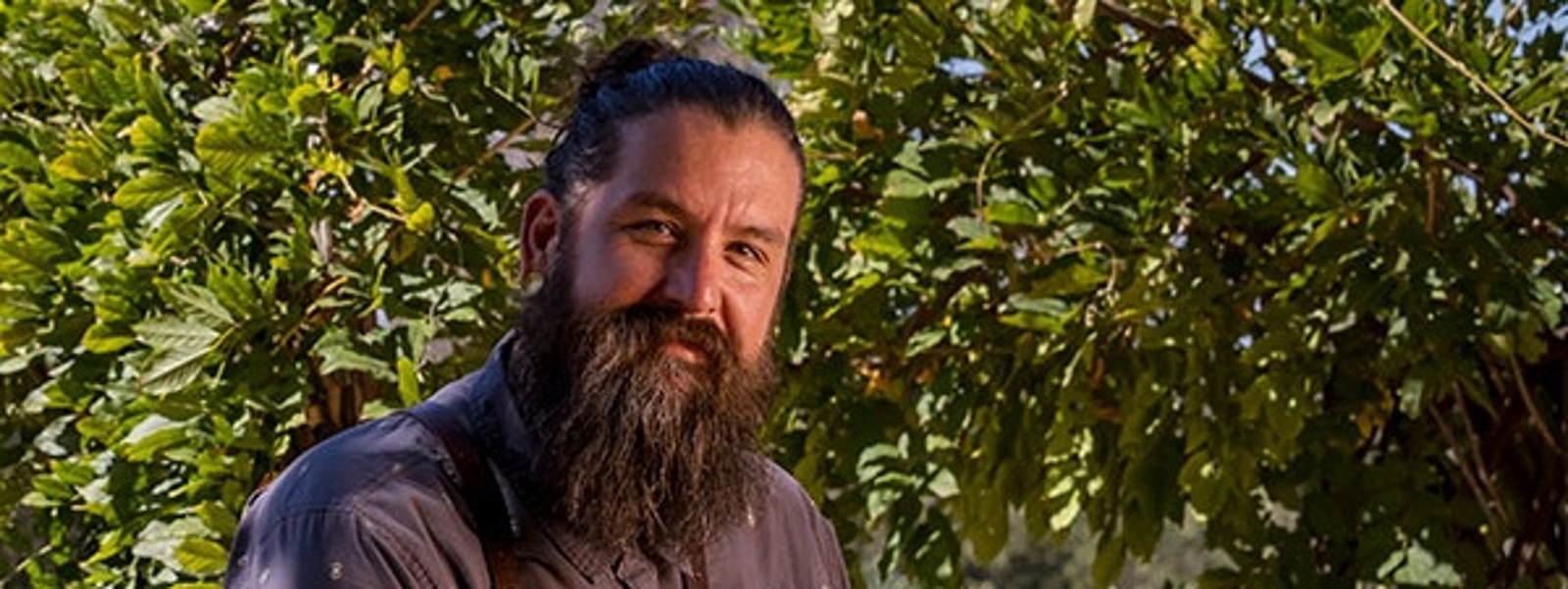
January/February 2024 California Bountiful magazine
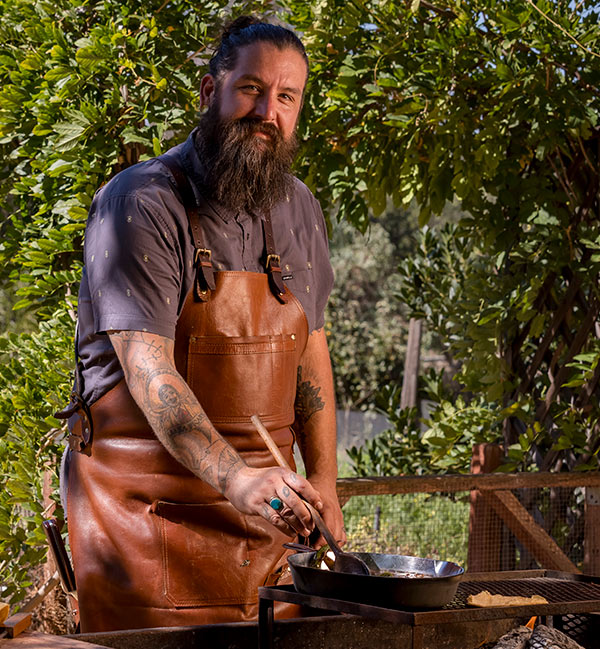
Retired science teacher aims to revive heirloom varieties
Story by Linda DuBois
Photos by David Poller
When Carlo Guardado craves a flavorful, satisfying lunch, his favorite go-to is a bowl of beans with a tortilla.
An important staple of his Mexican heritage, beans, packed with protein and fiber, are just as filling as “a big, hefty sandwich,” Guardado says.
As much as he enjoys eating beans, the chef likes cooking with them even more, incorporating them into entrées, side dishes and appetizers. His two favorites are cowboy beans and dirty rice with roasted vegetables.
Having owned and cooked in restaurants for about 17 years, he recently shifted to working independently, consulting for restaurants and cooking for farm dinners and special events. His preferred cooking method is over live fire on a grill he hauls to events in a chuckwagon.
After living in other states and abroad, Guardado moved back to his San Diego County hometown of Fallbrook about five years ago, shortly thereafter meeting Mike Reeske of Rio Del Rey, a small farm in nearby Valley Center that now supplies him with all his beans. Reeske’s heirloom dried beans have much better flavors and textures than typical store-bought varieties, Guardado says.
An heirloom bean variety is one that was grown continuously over several generations in one small area. Planted today, these beans cultivated by indigenous people still have the same distinct flavors that developed in each variety’s unique growing conditions. In contrast, the bean varieties familiar to most Americans have been bred for mass production and to create a uniform product.

Soak and simmer
Guardado’s first step in preparing a dish is to soak the beans for several hours in water with a little salt. The salt adds flavor, keeps the bean skins flexible so they won’t split and helps the beans soak up water and stay soft, he explains.
Soaking beans also can curb gas and other digestive discomfort by breaking down complex sugars and fibers. Studies show it may also break down compounds like phytic acid and lectins that interfere with nutrient absorption.
Once the beans are thoroughly soaked, Guardado discards the salt water and transfers the beans into cold, fresh water and brings them to a gentle simmer, which he says results in a better texture than boiling. He’ll often add spices and other ingredients like bay leaf, fresh thyme, crushed garlic, grilled onion, smoked chilies and oregano.
When the beans are soft, he finishes them off with a splash of vinegar, which “brightens the flavor.”
He likes to use a mix of bean varieties with different sizes, flavors and textures in one pot.
“Some stay firm and some get very creamy. Some are sweeter than others and some have rich notes of chocolate. The flavor profile of these is very nuanced. But the cool thing is when you put them all together, they make a very good, flavorful broth,” he says.
“Some people that come to these dinners don’t eat beans ever,” he adds. So, he’ll often prepare a bean soup appetizer to get them to “try just a couple of bites and maybe change their opinion and then add them to their diet.”
The introduction also helps start a conversation with them about his culture’s Alta California cuisine and the farmer who grows his beans. He likes sharing the story of Mike Reeske, a man of many talents dedicated to finding, cultivating and spreading the word about the beans once eaten by native tribes.
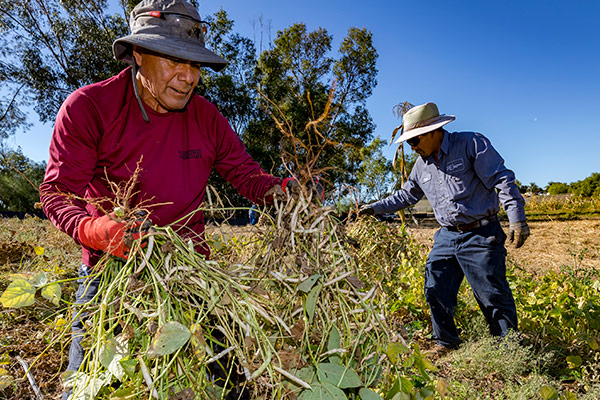
Post-retirement mission
It wasn’t until he retired from a long career as a high school science teacher in 2008 that Reeske turned his attention to farming.
He brings to it varied experiences and influences. A researcher and organic chemist, he’s co-authored books and developed educational materials dealing with science and sustainability and created programs to teach youths and adults about their local environments. He also was influenced by his parents, who were orange farmers and restaurant owners.
An article about heirloom beans inspired Reeske and his wife, Chris, to put in a few plants on their 2 1/2-acre property.
“I couldn’t believe how tasty they were,” he says of their first crop. So, the next year, they planted even more. Knowing that few farmers cultivate heirloom beans, they saw a void and officially launched Rio Del Rey in 2013. They now grow from 10 to 15 different varieties per year on 7 acres.
These include two lima-type beans, about seven common beans (pinto type) and five high-protein tepary beans.
“Tepary beans grow from one rainfall in the desert in poor soil and high temperatures,” Reeske says, adding these legumes show promise as a sustainable protein source in a hotter, drier climate.
The Reeskes also developed a new variety of common bean, Anazape. About five years ago, out of 800 pounds of their Anasazi beans, they discovered about 25 unusual-looking seeds. Even though it’s rare for beans to cross-pollinate, the Reeskes surmised from the beans’ appearance that bees had brought pollen from their nearby field of Rio Zapes and created a hybrid.
They planted the seeds and got identical beans the next year and have been growing them ever since.
“We did a tasting with 15 of some of the top chefs in San Diego County, and 13 out of 15 voted that bean No. 1,” Reeske says.
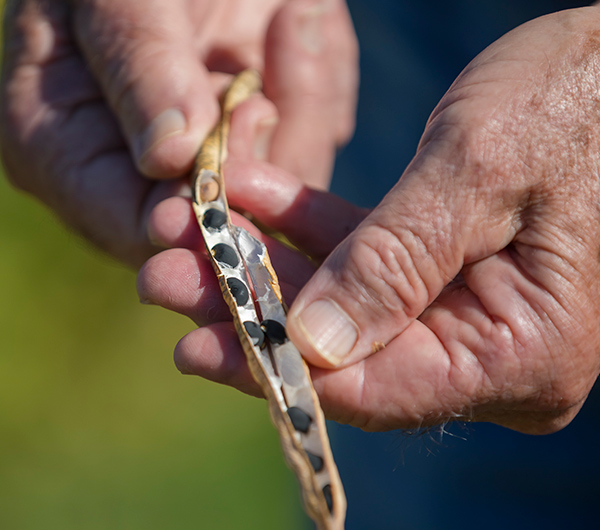
Heirlooms’ challenges
While deeply committed to organic heirloom bean revival, Reeske says it has its challenges.
About 90% of heirloom beans have bean common mosaic virus, which inhibits photosynthesis, leading to small yields and, therefore, higher prices for consumers.
The process is also labor-intensive. People, not machines, do the soil preparation, fertilizing, laying of drip irrigation and planting in the spring. In the late summer, they hand-harvest the partially dried beans with sickles and throw them into piles to finish drying. And because each bean variety matures at a different rate, harvesting must be done intermittently from about mid-August to late September.
Then there are relentless weeds. Last year, Reeske lost about 80% of his typical crop because he couldn’t find enough workers for this task, forcing him to temporarily halt bean sales on the Rio Del Rey website.
Once the harvested beans are completely dried, a small tractor-pulled thresher from Turkey shakes the beans from the pods. When cleaned of dirt and debris, the beans are put in a freezer to kill any weevils, a common bean pest.
Then the Reeskes hand-sort them to pick out beans that are split, moldy or otherwise less than perfect before bagging and labeling them for sale. The packages go to specialty markets and are available on the Rio Del Rey website.
Reeske does his own deliveries to restaurants rather than hiring a distributor. “I decided it was more fun for me to go and meet the chefs,” he says.
All those steps, though, are only part of his work.
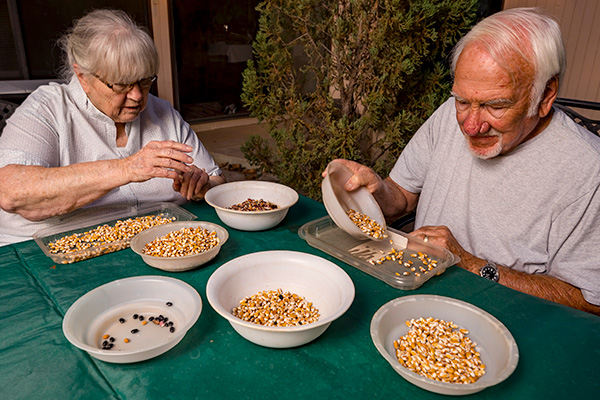
Researcher and advocate
Drawing on his science background, Reeske is working with University of California researchers to learn what varieties of beans are naturally resistant to pests and diseases and what will grow best in the local soils.
He’s also working on a program to restore the cultivation of certain tribal heirloom beans that are an important part of ceremonies and traditions.
And he’s an heirloom bean advocate, trying to convince more small farmers to try growing them. Even though they aren’t a big moneymaker, heirloom beans add nitrogen to the soil, giving farmers “free fertilizer,” he says.
He’s also working to create farm tours and other educational opportunities for the public to get more people to eat beans more often, emphasizing they are an economical, sustainable source of protein, with numerous health benefits.
“For instance, I’m a Type 2 diabetic and after I started eating beans three times a week, I gave up one of my meds because beans stabilize blood sugar,” he says.
“I also want to educate people that all beans don’t taste the same, and there’s a whole variety of flavors you can experience.”
Reeske chuckles as he sums up his passion. “I guess I’m like the Johnny Appleseed of beans.”
Ancient beans still thrive
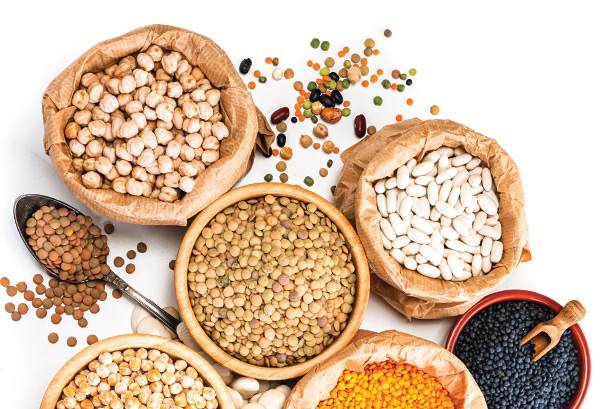
Beans are found in myriad cuisines from throughout the world in a wide variety of colors, shapes and flavors—and all of them have ancient roots.
Mike Reeske, a scientist and heirloom bean grower in Valley Center, says all modern-day dried common beans—including black beans, kidney beans and pinto beans—were first cultivated in Mexico more than 10,000 years ago, when they were domesticated from wild plants.
Over the years, variations developed as the plants went from vines to shrubs to bushes, he explains.
The fact that dried beans can be stored for “upwards of many, many years” made them a practical and reliable food source.
“There’s a lot of variation in beans and they’re so highly adaptable that they can grow in many different parts of the world,” Reeske says. “I’ve collected beans off the Black Sea in Northern Turkey, with origins from Chile 200 years before that.”
Other well-known legumes originated thousands of years ago in other parts of the world.
Lentils, garbanzos and fava beans originated in the Middle East and Mediterranean basin.
Reeske shares an interesting tidbit about the black-eyed peas from West Africa. “They would take the beans and braid them into women’s hair (as decoration),” he says.
Today, beans are generally enjoyed three different ways and harvested at three different stages, depending on their variety and purpose, Reeske explains.
For example, garden variety green beans eaten as a vegetable with the tender pods still intact are harvested young.
The next to be picked are shelly beans, such as fava or lima beans, which are mature beans that are removed from their tough, fibrous pods and eaten fresh.
The last to be harvested are the dried-bean varieties, which are ready after the pod turns from green to yellow to brown, when they’ve partially dried on the plant.

